Just Beginning, Getting Settled, and Looking for More
Just Beginning
Overview
This stage represents the first step in a chosen or discovered field. What happens in this stage is significant; as a result of their experiences, employees will be making decisions about whether this field or position will become a long-term career or a step in their search for the right career for them. Every experience is a new one, so your role as a manager is to make sure that those experiences are remarkable.
In this stage, the employee may be perceived as “the new kid on the block,” who is full of ideas and lacks experience—whether this is his first position as a working professional or just the first position in a new career, level, or company. Consequently, others who resist new ideas may disregard his proposals for many reasons, including: “we tried that before and it did not work,” “upper management will not buy that,” or “let me show you how we do things around here.” In contrast, those who are open to new possibilities may welcome the new, refreshing point of view of someone; some of them may even offer to open doors and mentor this employee. Your role as a manager is to support the employee in this transition, reinforcing the value of new ideas and contributions.
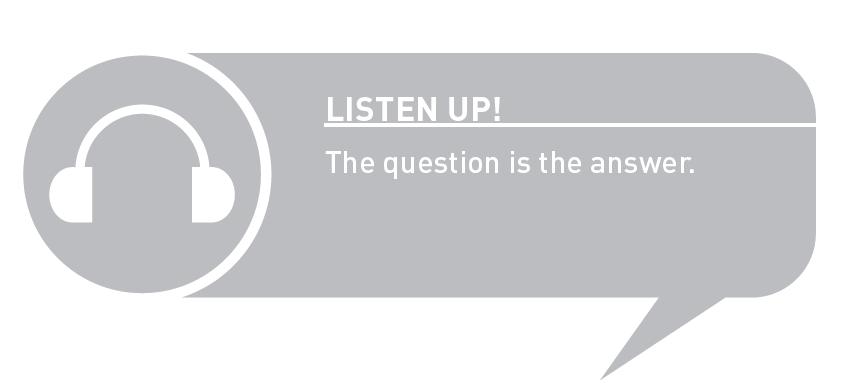
As “the new kid on the block,” this employee may feel the need to prove his worth more than someone who already has a reputation in a particular field. This need may be either self-imposed or a result of expectations established during the recruitment process. Either way, your role as a manager is to allow the employee to demonstrate success without restricting opportunities to learn, and to support him in the journey up the learning curve. You may also be able to modify those expectations if you think that they are unreasonable or unattainable under current circumstances, which shows you support your employee’s success. At the same time, you may need to address any concerns of team members related to positive or negative reactions to the newcomer.
This employee probably has different views of herself and the organization, perhaps because of lack of experience. For example, the employee may overrate or underrate her own competencies, thus failing to appropriately match her capabilities with the tasks assigned. As a consequence, she may obtain less than optimal results either because she needs additional time, information, training, and resources or because she is not demonstrating her own true potential. This employee may also have an idealized, stereotypical, positive, or negative view of the company based only on its public image or particular events because she lacks valid criteria against which to compare the company. Before we continue our discussion of the Just Beginning stage, we would like you to identify in which stage of their careers your employees are.
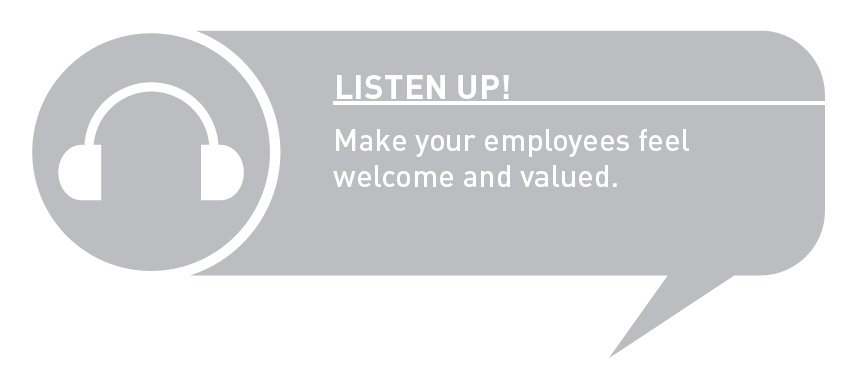
Now it’s your turn.
Who is in the Just Beginning stage? List the names of those employees who are in this stage in Worksheet 7.1.
Worksheet 7.1 Employees in the Just Beginning Stage
|
JUST BEGINNING |
EMPLOYEE NAMES |
|
|
|
|
|
|
|
|
Drivers
An employee who is in the Just Beginning stage derives a strong sense of satisfaction from his work. He is excited about the future and eager to determine to what his choices led, partially based on career image. An employee who sees his current role as just a job is less likely to be highly engaged than one who defines the same role as a step in a career. On the contrary, an employee who sees the current role as a step in a career or as part of something else that will transcend any particular organization’s boundaries will probably be more engaged.
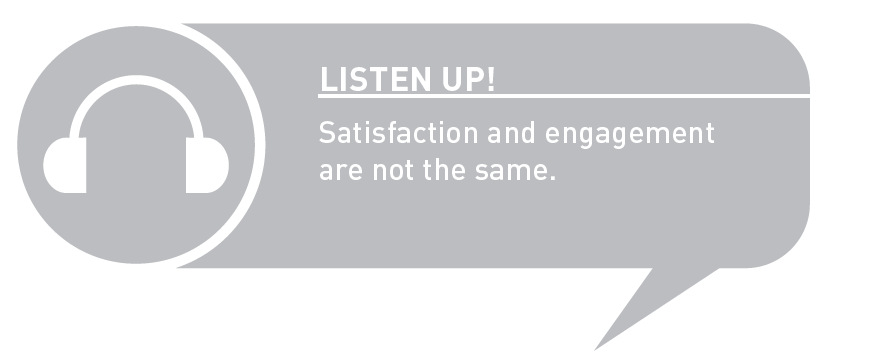
Intrinsic motivation, defined elsewhere in this book, is a strong driver of engagement at this stage as the employee finds an inner power to focus energy onto the tasks at hand. You as a manager have a priceless opportunity to positively influence the experience of this employee as you capitalize on that intrinsic motivation through balance in total rewards and performance management.
Total rewards are an important component of the Just Beginning stage because the employee’s acceptance of the offer to join the organization may be greatly influenced by their composition. The combination of base pay, incentive pay, and overall benefits, as well as organizational image and perceived reputation, is often the decisive factor to accept an offer, along with potential development opportunities in the company. Employees will try to assess what possibilities are available to grow, even if not thinking about the immediate future. You as a manager should be aware of this need and ensure that those rewards, particularly those related to growth and development, are available or potentially available for the employee—while always addressing any concerns or unrealistic expectations.
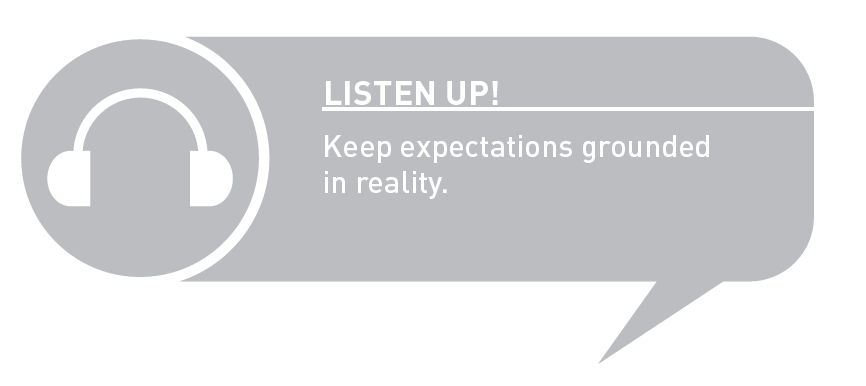
Because this employee will compare subsequent experiences with those that he had in previous positions, you as a manager need to maintain fairness and objectivity, reinforce and reward appropriate behaviors, and become a positive role model to maximize every chance to foster employee engagement with the organization and with you as the manager.
Employee Behaviors
These are some behaviors that you may observe when an employee is in the Just Beginning stage.
- Expresses a need to speak positively about the organization and show pride in belonging to it.
- Eagerly seeks opportunities to grow and learn inside as well as outside of the organization.
- Creates an image based on the chosen field’s models in terms of appearance, vocabulary, and activities, among other components.
- May try to convey more experience in the field than what is real.
- Compares herself with peers in terms of image, accomplishments, projects, and income.
- Experiments with different work habits and routines.
- Networks to make friends and meet mentors.
- Seeks information about expectations in general.
Now it’s your turn.
Select which behaviors from this list you have observed among the employees who are in the Just Beginning stage in Worksheet 7.2.
Worksheet 7.2 Behaviors Observed From Employees in Just Beginning Stage
|
BEHAVIORS |
EMPLOYEE NAMES |
||
|
Expresses a need to speak positively about the organization and show pride in belonging to it. |
|||
|
Eagerly seeks opportunities to grow and learn inside as well as outside of the organization. |
|||
|
Creates an image based on the chosen field’s models in terms of appearance, vocabulary, and activities, among other components. |
|||
|
May try to convey more experience in the field than what is real. |
|||
|
Compares herself with peers in terms of image, accomplishments, projects, and income. |
|||
|
Experiments with different work habits and routines. |
|||
|
Networks to make friends and meet mentors. |
|||
|
Seeks information about expectations in general. |
|||
Manager Dos and Don’ts
Here are some examples of what you should and should not do when an employee is in the Just Beginning stage.
Dos
- Allow them to voice their ideas.
- Give opportunities to explore what the employee can do and stretch his abilities.
- Allow experimentation.
- Foster connection between you as a manager and the employee.
- Explain goals and objectives as well as all aspects of performance management.
- Reward and reinforce.
- Provide resources to do the job.
- Show “the company’s way of doing things.”
- Show appropriate behaviors for the organization and the position.
Don’ts
- Provide incomplete information.
- Limit the employee’s involvement in the organization “because it is too early for you to do X or Y.”
- Discourage participation.
- Micromanage the employee.
- Penalize for mistakes.
- Deny opportunities to the employee for which he is qualified (hoarding talent or killing it).
- Leave employee to her own means to find what she needs.
- Discriminate against the employee because she is new to the position, career, or profession and “has much to learn.”
- Assume that he knows the “rules.”

Now it’s your turn.
Worksheet 7.3 presents a behavior self-assessment for you to identify those behaviors that you have displayed or that you display typically. Place a check mark on the right column to indicate if you display those behaviors, you do not display them, or you display them sometimes.
Worksheet 7.3 Manager Behavior Self-Assessment: Just Beginning Stage
|
BEHAVIOR |
YES |
NO |
SOMETIMES |
|
DOS: |
|||
|
Allow them to voice their ideas. |
|||
|
Give opportunities to explore what the employee can do and stretch his abilities. |
|||
|
Allow experimentation. |
|||
|
Foster connection between you as a manager and the employee. |
|||
|
Explain goals and objectives as well as all aspects of performance management. |
|||
|
Reward and reinforce. |
|||
|
Provide resources to do the job. |
|||
|
Show “the company’s way of doing things.” |
|||
|
Show appropriate behaviors for the organization and the position. |
|||
|
DON’TS: |
|||
|
Provide incomplete information. |
|||
|
Limit the employee’s involvement in the organization “because it is too early for you to do X or Y.” |
|||
|
Discourage participation. |
|||
|
Micromanage the employee. |
|||
|
Penalize for mistakes. |
|||
|
Deny opportunities to the employee for which he is qualified (hoarding talent or killing it). |
|||
|
Leave employee to her own means to find what she needs. |
|||
|
Discriminate against the employee because she is new to the position, career, or profession and “has much to learn.” |
|||
|
Assume that he knows the “rules.” |
-
How many are dos and how many are don’ts?
-
Identify the three don’ts that you would like to turn into dos.
-
Identify the behaviors that you do sometimes and explain why you do so.
Getting Settled
Overview
Steadiness and stability are the most significant descriptors of this stage. The employee has gained some experience in the field and career so he exudes more confidence. His focus changes to getting and maintaining a reputation in the field in the company as well as outside of it as he defines a professional niche. As a consequence, he makes every possible effort to stay up to date in the chosen field and to consistently demonstrate that knowledge to become known as an expert or “go to” person. Before we continue our discussion of the Getting Settled stage, we would like you to identify in which stage of their careers your employees are.
Now it’s your turn.
Who is in the Getting Settled stage? List the names of those employees who are in this stage in Worksheet 7.4.
Worksheet 7.4 Employees in the Getting Settled Stage
|
GETTING SETTELED |
EMPLOYEE NAMES |
|
|
|
|
|
|
|
|
Drivers
In the Getting Settled stage, the employee has already defined what the current position is and has generally accepted that definition as her reality. Therefore, the importance of the employee’s lens about her autonomy as a driver of employee engagement diminishes unless an unforeseen event takes place. The nature of the possible event and how it is handled may have an effect on that lens, which may be similar to when a Critical Incident alters the course of the employee’s path through the Engagement “I” Path.
At this stage, the employee will focus on benefits, image, and environment that were offered prior to joining the company because she will have more time to find out if they will be available and the conditions under which they will be available. It is important for you as a manager to provide recognitions, incentives, and opportunities, so we recommend that you keep in mind that the employee will be most attentive for information and availability about those rewards.
Communication will be a driver of employee engagement at this stage. Formal communication are the mechanism through which the employee receives official information about the organization and compares it to her on-the-job experiences as well as to what she gets through unofficial channels such as the office grapevine.
Performance management continues to be a driver of employee engagement at this stage. As the employee seeks stability, he also strengthens the relationship with you as a manager. How you conduct different aspects of performance management, such as rewards and recognition as well as career opportunities, may be a factor in whether the employee is engaged with you regardless of other aspects of his experience with the organization or even with the chosen field in general. You as a manager are the architect of that relationship.
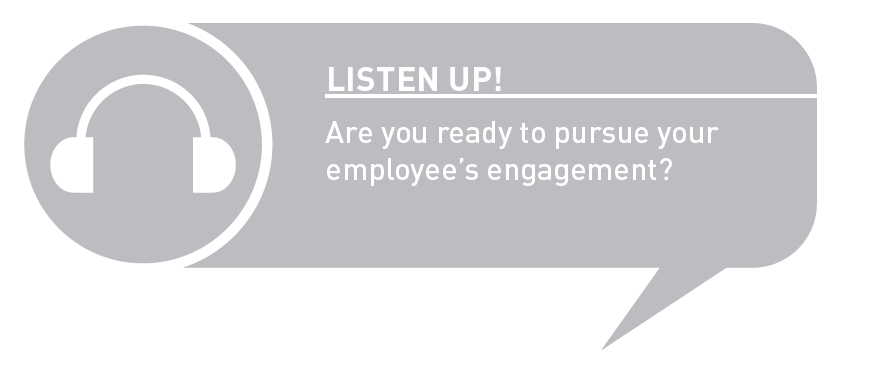
Employee Behaviors
These are some behaviors that you may observe when an employee is in the Getting Settled stage.
- Networks to become known in the field as an expert because the purpose of networking changes as he seeks stability in the chosen field and career.
- Gets involved in professional organizations to build a reputation as an expert.
- Becomes more goal-oriented and strategic in the use of time and energy.
- May display signs of being engaged with the organization, the manager, or both.
- Follows a defined work style as well as work habits and routines.
- Demonstrates that he has a more realistic view of the career or field in the way that he speaks about it.
Now it’s your turn.
Select which behaviors from this list you have observed among the employees who are in the Getting Settled stage in Worksheet 7.5.
Worksheet 7.5. Behaviors Observed From Employees in Getting Settled Stage
|
BEHAVIORS |
EMPLOYEE NAMES |
||
|
Networks to become known in the field as an expert because the purpose of networking changes as he seeks stability in the chosen field and career. |
|||
|
Gets involved in professional organizations to build a reputation as an expert. |
|||
|
Becomes more goal-oriented and strategic in the use of time and energy. |
|||
|
May display signs of being engaged with the organization, the manager, or both. |
|||
|
Follows a defined work style as well as work habits and routines. |
|||
|
Demonstrates that he has a more realistic view of the career or field in the way that he speaks about it. |
|||
Manager Dos and Don’ts
Here are some examples of what you should and should not do when an employee is in the Getting Settled stage.
Dos
- Model appropriate behaviors.
- Communicate, communicate, and communicate.
- Reward and reinforce.
- Provide resources to do the job.
- Be fair in all aspects of performance management, providing flexibility whenever appropriate.
- Deliver on promises.
- Maintain a good relationship with the employee as a way to find out what she needs and what she wants for the future.
- Offer opportunities to grow and develop even if these are lateral moves.
Don’ts
- Withhold information from the employee.
- Postpone opportunities to reward and reinforce.
- Withhold resources to do the job.
- Discriminate against the employee in performance management “because she is in a comfort zone and does not want to move.”
- Withhold rewards and benefits because of above.
- Offer growth and development opportunities to other employees because of arbitrary reasons.
- Become detached from the employee because she is not the “flavor of the month.”
- Use only electronic means to communicate.
Now it’s your turn.
Worksheet 7.6 presents a behavior self-assessment for you to identify those behaviors that you have displayed or that you display typically. Place a check mark on the right column to indicate if you display those behaviors, you do not display them, or you display them sometimes.
Worksheet 7.6Manager Behavior Self-Assessment: Getting Settled Stage
|
BEHAVIOR |
YES |
NO |
SOMETIMES |
|
DOS: |
|||
|
Model appropriate behaviors. |
|||
|
Communicate, communicate, and communicate. |
|||
|
Reward and reinforce. |
|||
|
Provide resources to do the job. |
|||
|
Be fair in all aspects of performance management, providing flexibility whenever appropriate. |
|||
|
Deliver on promises. |
|||
|
Maintain a good relationship with the employee as a way to find out what she needs and what she wants for the future. |
|||
|
Offer opportunities to grow and develop even if these are lateral moves. |
|||
|
DON’TS |
|||
|
Withhold information from the employee. |
|||
|
Postpone opportunities to reward and reinforce. |
|||
|
Withhold resources to do the job. |
|||
|
Discriminate against the employee in performance management “because she is in a comfort zone and does not want to move.” |
|||
|
Withhold rewards and benefits because of above. |
|||
|
Offer growth and development opportunities to other employees because of arbitrary reasons. |
|||
|
Become detached from the employee because she is not the “flavor of the month.” |
|||
|
Use only electronic means to communicate. |
-
How many are dos and how many are don’ts?
-
Identify the three don’ts that you would like to turn into dos.
-
Identify the behaviors that you do sometimes and explain why you do so.
Looking for More
Overview
In this stage, the employee has already significant experience in the field. Usually, after careful thought and consideration or insistence from friends and family members, he begins to realize that he has already accomplished what he could in the current role. Consequently, he begins to inquire about what else he could do—either in his current role through projects or other assignments, or elsewhere in the company where his experiences could be valuable. At this point, the employee is not usually inclined to leave the organization because he is still engaged with it. Therefore, you as a manager have another distinctive opportunity to sway his engagement positively depending on how you address those needs. Before we continue our discussion of the Looking for More stage, we would like you to identify in which stage of their careers your employees are.
Now it’s your turn.
Who is in the Looking for More stage? List the names of those employees who are in this stage in Worksheet 7.7.
Worksheet 7.7 Employees in the Looking for More Stage
|
LOOKING FOR MORE |
EMPLOYEE NAMES |
|
|
|
|
|
|
|
|
Drivers
As suggested in our overview of this stage, career opportunities within the company will be a major driver of employee engagement because by now the employee has created some expectations about the future. You as a manager will need to address the availability of those opportunities, and your employee’s expectations of them, such as stretch assignments, lateral moves, or vertical moves. We invite you to be particularly thoughtful when you plan for discussions about career opportunities with your employee, particularly if you disagree with her self-assessment of her qualifications, because any misunderstandings may lead to hurt feelings that in the end could result in lower engagement with the organization or with you.
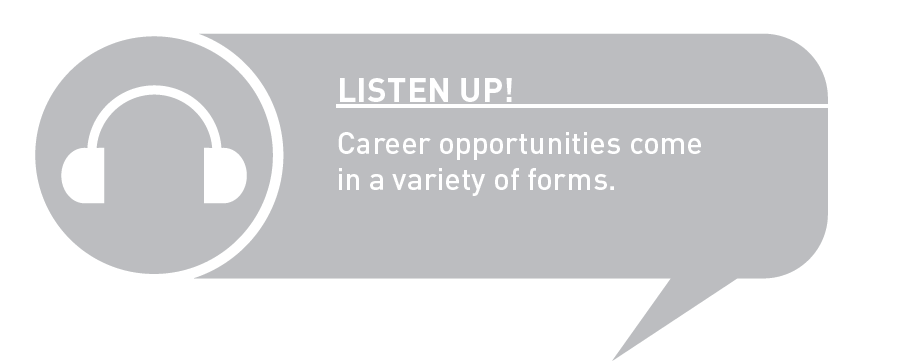
Incentive pay drives engagement at this stage because the employee may decide to stay at the current role in the company instead of actively seeking something else to do if she receives incentive pay for particular accomplishments. You as a manager shall keep in mind that this employee masters the role.
Offering flexibility in working arrangements and schedules may be something to consider while exploring options for this employee who may re-examine his decision to stay in the company if he does not receive something in return for long-term performance and loyalty.
Employee Behaviors
These are some behaviors that you may observe when an employee is in the Looking for More stage.
- Networks to find out about growth opportunities in the organization and outside of it.
- Compares himself with peers looking for a competitive advantage for those opportunities.
- Seeks visibility from other levels of management at every opportunity.
- Shows signs of being engaged with the organization, but not necessarily with the manager.
- Looks for learning opportunities to build marketable skills inside and outside of the organization.
- Makes efforts to market herself for other potential roles.
Now it’s your turn.
Select which behaviors from this list you have observed among the employees who are in the Looking for More stage in Worksheet 7.8.
Worksheet 7.8 Behaviors Observed From Employees in Looking for More Stage
|
BEHAVIORS |
EMPLOYEE NAMES |
||
|
Networks to find out about growth opportunities in the organization and outside of it. |
|||
|
Compares himself with peers looking for a competitive advantage for those opportunities. |
|||
|
Seeks visibility from other levels of management at every opportunity. |
|||
|
Shows signs of being engaged with the organization, but not necessarily with the manager. |
|||
|
Looks for learning opportunities to build marketable skills inside and outside of the organization. |
|||
|
Makes efforts to market herself for other potential roles. |
|||
Manager Dos and Don’ts
Here are some examples of what you should and should not do when an employee is in the Looking for More stage.
Dos
- Provide relevant tasks.
- Find opportunities and projects for development.
- Be fair in all aspects of performance management.
- Offer flexibility and options to work differently.
- Continue a balanced relationship with the employee.
- Communicate information about the future as pertinent to maintain hope and focus on what is next.
- Provide positive feedback.
Don’ts
- Deny opportunities and projects for development based on an assumption that the employee is getting ready to leave.
- Discriminate against the employee in performance management issues based on an assumption that the employee is getting ready to leave.
- Disregard the importance of employee comments.
- Withhold incentive pay and rewards.
- Become detached from the employee or rely only on electronic means to communicate.
- Withhold information about the future.
Now it’s your turn.
Worksheet 7.9 presents a behavior self-assessment for you to identify those behaviors that you have displayed or that you display typically. Place a check mark on the right column to indicate if you display those behaviors, you do not display them, or you display them sometimes.
Worksheet 7.9 Manager Behavior Self-Assessment: Looking for More Stage
|
BEHAVIOR |
YES |
NO |
SOMETIMES |
|
DOS: |
|||
|
Provide relevant tasks. |
|||
|
Find opportunities and projects for development. |
|||
|
Be fair in all aspects of performance management. |
|||
|
Offer flexibility and options to work differently. |
|||
|
Continue a balanced relationship with the employee. |
|||
|
Communicate information about the future as pertinent to maintain hope and focus on what is next. |
|||
|
Provide positive feedback. |
|||
|
DON’TS: |
|||
|
Deny opportunities and projects for development based on an assumption that the employee is getting ready to leave. |
|||
|
Discriminate against the employee in performance management issues based on an assumption that the employee is getting ready to leave. |
|||
|
Disregard the importance of employee comments. |
|||
|
Withhold incentive pay and rewards. |
|||
|
Become detached from the employee or rely only on electronic means to communicate. |
|||
|
Withhold information about the future. |
-
How many are dos and how many are don’ts?
-
Identify the three don’ts that you would like to turn into dos.
-
Identify the behaviors that you do sometimes and explain why you do so.
In the next chapter we’ll explore the next stages: Riding the Tide, Mission Accomplished, and Moving On.

